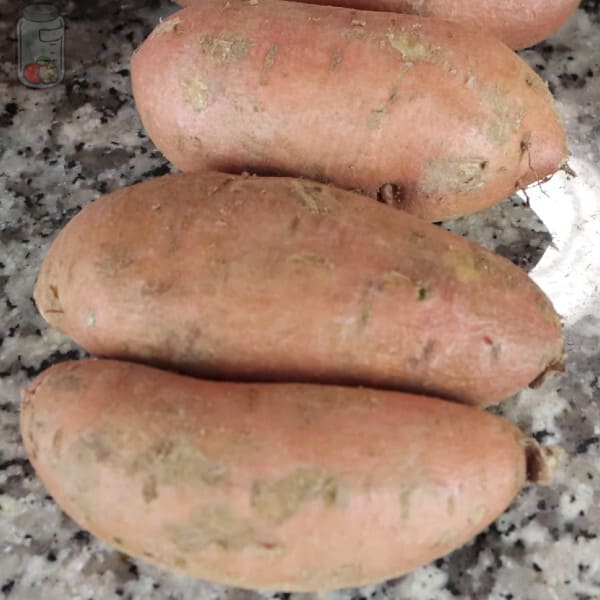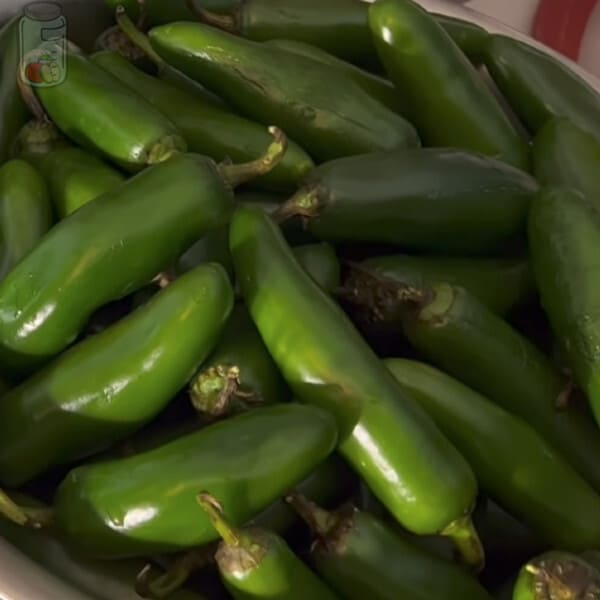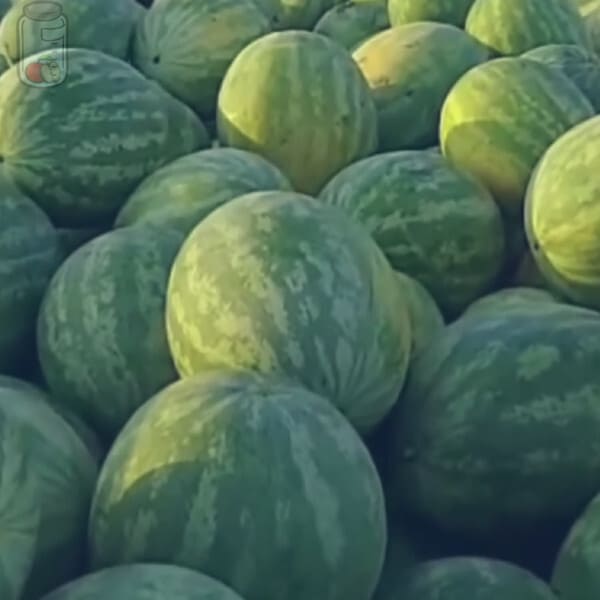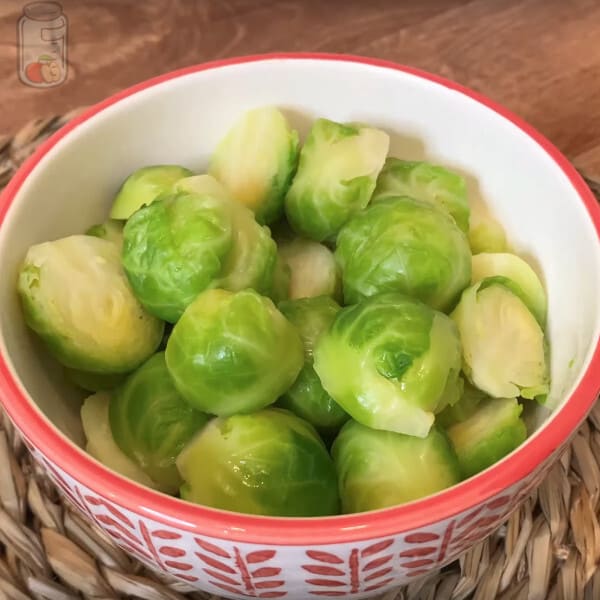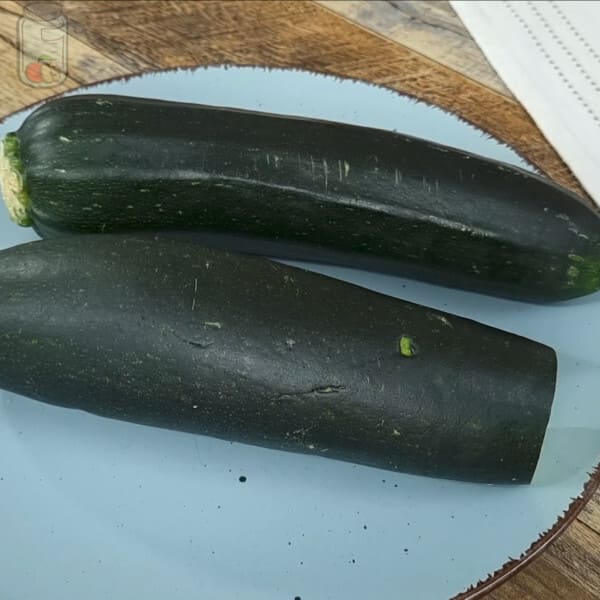Bananas are a fruit with a wide variety of types. Some can be eaten raw, while others are cooked, changing their shelf life. So if you are here on this post, it means you want to learn how to store bananas properly, and I will go for it now.
If the bananas are green, I advise you to leave them at room temperature until they ripen (this may take 1 or 2 weeks). Once ripe, store them in the fridge for 2 to 5 days or in the freezer for a month. You can also prepare jam or dehydrate the bananas for long-term storage.

To learn more about how to preserve bananas, continue reading.
Table of Contents
How to preserve bananas
As I mentioned at the beginning, a wide variety of bananas vary in size and flavor, making them a very versatile food. For example, you can prepare various sweet recipes with the bananas you usually eat raw.
While with the other types of plantain, whether they are green or ripe, they can be cooked and prepared in a variety of savory dishes.
And since we usually buy them in quantity, it is crucial to know how to preserve bananas in the best possible way.
How to store bananas at room temperature
Storing at room temperature is the most common method, especially if the bananas are green. But, at the same time, some others leave them at room temperature to save space in the fridge.
If you want your green bananas to ripen quickly, put them in a plastic bag, store them in a cool, dry drawer for 2-3 days, and watch them turn yellow.
Another way to ripen them quickly is to separate the bananas from the bunch, put them in a bowl or basket without stacking them and store them in a drawer or drawer for 2 or 3 days.
On the other hand, if the bananas are somewhat painted, that is, they have green and yellow tones, or you want to keep them for a little longer, you can hang them in a dark room that is not too hot.
Pass the hook through the base and leave them hanging until the bananas are fully mature. Depending on how green they are, this can take 3-5 days. But they will take 1 to 2 weeks to mature if they are entirely green.
You can also leave it for the same period in a large bowl or basket and cover them with a tea towel.
Keep in mind that you should not expose the bananas to direct sunlight, nor should you separate them from the bunch if you want them to last a long time since it has been proven that bananas that are still attached to the bunch take longer to ripen, which extend their shelf life.
If the bananas are ripe or have reached their optimal state of ripeness, I recommend that you store them in the fridge since the heat will cause them to rot soon.
How to keep bananas in the fridge
Storing in the fridge is the ideal method for storing ripe bananas since the cold in the refrigerator slows down the ripening process considerably.
To store the bananas in the fridge, you have to do the following:
- Step 1: Wrap the stems with plastic.
Bananas give off ethylene gas which causes the fruit to ripen quickly. This gas is emitted by the stem where all the bananas are joined. If you cover it with plastic film, you can reduce gas emissions, slowing the ripening.
- Step 2: Put the bananas in a paper bag.
If the bananas are ripe, it is not convenient to put them near other fruits, so I recommend you isolate them a bit by putting them in a paper bag.
A trick that can benefit you is to put a green avocado, apple, or pear inside this bag so that they absorb more ethylene gas and thus slow down the ripening of the bananas even more.
- Step 3: Store the bananas in the fridge.
If they are inside the paper bag, you can put the bananas in the crisper or at the bottom of the fridge. If the bananas are ripe, they can be five days in the refrigerator. [1]
On the other hand, if the bananas are green, they can last 2 or 3 weeks in the fridge. But don’t be scared if you see that the shell is withering, since thanks to the cold and the other tricks I gave you, the interior will take longer to mature.
You can verify this by tasting one, and you will see that it does not have the characteristic sweetness that bananas obtain when they are fully ripe.
How to freeze bananas
Can bananas be frozen? Yes, bananas freeze well, but only without the peel, so no freezing whole bananas.
- Step 1: Peel the bananas.
Remove the skin of the banana either with your hands or a knife.
- Step 2: Cut the bananas.
Cut the bananas into pieces of approximately one or half a finger.
- Step 3: Soak bananas in citrus.
To prevent them from turning brown (peeled bananas oxidize quickly), add the juice of a large lemon to a bowl of water, stir well, and then soak the bananas for a minute or two.
Then, strain and dry the pieces with paper towels.
- Step 4: Freeze for a few hours.
Put wax paper or a non-stick sheet on a tray and arrange the banana pieces on it, trying to leave space between them. Freeze for 3 to 4 hours.
- Step 5: Transfer the frozen pieces to an airtight bag.
Transfer the banana pieces to a resealable freezer bag or container with a tight lid when the banana pieces are frozen.
Ideally, you should divide the pieces into several small bags to only thaw the portions that you will need.
- Step 6: Write the storage date.
It is always good to write down the storage date of the food, especially if you will store the bananas for a long time.
- Step 7: Store the bananas in the freezer.
Frozen banana pieces will keep good for about a month. [2]
How to preserve the cooked banana?
If you have any leftover plantains, whether fried, roasted, or boiled, here’s what to do to store them:
- Step 1: Wait for the bananas to cool down.
If you fried the bananas or boiled them, place them on absorbent paper to remove excess oil or water. If you baked them, put them on a rack.
- Step 2: Put inside an airtight container.
Place the bananas inside the container, which should be freezer safe if you store them in the freezer, although you can also use a freezer bag.
- Step 3: Label the container.
Write down the storage date of the cooked plantain or stick a label with that information.
- Step 4: Store the cooked bananas in the fridge or freezer.
If you have refrigerated the bananas, they will keep for five days. On the other hand, if you freeze them, they will last from 2 to 3 months.
Preserve banana jam
You have too many ripe bananas and don’t know what to do with them. An excellent way to take advantage of them and not waste a single one would be to prepare a banana jam.
For this, you will need about 500 grams of very ripe bananas, about 300 grams of sugar, 100 ml of water, the juice of a small lemon, and a stick of cinnamon (optional).
- Step 1: Sterilize glass jars.
In a pot of water, boil some glass jars with airtight or screw-top lids for about 15 minutes, then remove them with tongs and let them drain on a rack until dry.
- Step 2: Make a syrup.
In a pot, add the water, sugar, and cinnamon, take it to the stove and let it boil for 3 minutes, then remove it from the heat.
- Step 3: Peel the bananas.
Remove the peel from the bananas and chop them. Put the pieces in a bowl, add the lemon juice and crush it.
- Step 4: Add the puree to the syrup.
Mix the puree you made with the bananas with the syrup.
- Step 5: Cook over low heat.
Return the pot to the heat until you get the desired consistency.
- Step 6: Transfer the jam to the jars.
You can use a funnel to make it much easier to fill the jars, but you can still use a spoon. Do not fill the container; leave at least one finger of free space.
- Step 7: Perform vacuum sealing.
Place the jars with jam in a large pot, with a clean kitchen towel at the bottom, to prevent the jars from breaking. Fill the pot with water until you cover the containers.
Please turn on the heat, and when it starts to boil, wait about 20 minutes. After that, turn off the stove, waits for the water to warm up, and take out the jars with a pair of tweezers. Put them on the counter or a table, but do not let the sun hit them; let them rest for about 24 hours.
- Step 8: Write the preparation date.
Write the date of preparation on the jars, or put a label with that information.
- For 9: Save the banana jam.
It would be best if you keep the banana jam in the fridge. If the jar remains sealed, it will stay in good condition for a whole year. On the other hand, it can last about six months if uncovered.
Preserve banana compote
Another way to take advantage of ripe bananas is to make a compote. For this, you will need about six bananas, 100 grams of white sugar, 100 grams of brown sugar, 200 milliliters of water, the juice of one lemon, a cinnamon stick, and a quarter teaspoon of powdered spices.
To prepare the banana compote, you must:
- Step 1: Sterilize the glass jars.
To store the banana compote, you should use screw-top glass jars. Please put them in a pot with water and boil them for 15 minutes to sterilize them.
Then take them out with tongs and put them on a rack to drain and dry.
- Step 2: Peel and slice the bananas.
Peel the bananas and then cut them into slices.
- Step 3: Cook.
Put water in a pot and add the lemon juice, the two types of sugar, and the spices (optional), and stir to integrate well. Turn on the stove and cook over medium heat. When it starts to boil, add the banana slices and cinnamon.
Lower the temperature and cook for 20 minutes, occasionally stirring to prevent sticking. You must be aware because it burns very easily. Once the fruit is soft and caramelized, turn off the heat.
- Step 4: Wait for it to cool down.
Before transferring the compote to a container, wait for it to cool down completely. Then, if you want to make a puree, mash the bananas with a fork, but if you prefer, you can leave the pieces whole.
- Step 5: Pour the behaves into the jars.
Once cool, remove the cinnamon stick and put the compote in the glass jars that should already be completely dry.
- Step 6: Label.
Put a label with the preparation date on the jars with the banana compote.
- Step 7: Store the banana compote in the fridge.
If the jar with the banana compote remains sealed, it can last about 2 or 3 months in the fridge, and if you open it, only one week.
To freeze it, pass the compote to some airtight bags or containers suitable for freezing. In this way, it can last six months.
How to dehydrate bananas?
Dried bananas are a great and highly nutritious snack, and children love them.
To dehydrate them, I advise you only to use ripe bananas at the optimum point of ripeness; that is, they are firm and without darkened areas.
- Step 1: Peel and slice the bananas.
Remove the skin and cut them into 2-centimeter pieces.
- Step 2: Soak in water and lemon.
Fill a bowl with water and add the juice of a lemon, then submerge the banana pieces for a minute or two to prevent them from getting too oxidized when you dry them.
Then, drain and wait for them to dry a bit.
- Step 3: Dehydrate the banana.
To dehydrate the banana, you can use a conventional oven. However, if you have a food dehydrator, it is much better since you only have to put the pieces in the device, leaving a little space between them, and adjust the temperature to 57°C (135°F) to dehydrate from about 6 to 12 hours.
If you use an oven, set it to the lowest possible temperature, between 70°-90°C (160°F – 190°F). Arrange the banana pieces on a tray, leaving space between them, and dry for 1 to 3 hours.
If you have a fine grid, much better, since that way, you will not have to turn the pieces every half hour to prevent them from sticking to the tray.
It is ready when the pieces have flattened out, are pliable, and don’t feel sticky to the touch.
- Step 4: Pack into a glass container.
Let the dried banana rest for a few minutes before storing it so that the internal steam dissipates and does not generate humidity. Plus, there’s nothing better for storing dried fruit than glass containers with tight lids.
But you can also use plastic bags or containers. However, a trick I can give you is not to entirely fill the container where you will put the dehydrated fruit since it does not always dry completely, and you will be able to notice it days later when you see moisture on the walls of the container.
If this happens, you must dehydrate the banana again for a couple more hours.
- Step 5: Label the container.
It will help if you stick a label with the storage date on the jar or bag where you will put the dehydrated banana or write it directly on the container.
- Step 6: Store the dehydrated banana at room temperature.
You can put it in your pantry that is kept dry, cool, and dark. In this way, the dehydrated banana will remain in good condition for a whole year.
How do you know if the bananas have gone bad?
To determine if the bananas have spoiled, they must have one of these characteristics:
- Bad smell: if they emit a solid stinky smell, they are no longer in good condition.
- Presence of mold: if your bananas have dark, green, or white spots, they have developed and are not safe to eat, even though these spots are on the skin. Since when these spots or fluff appear, it is because all the fruit is already contaminated.
- Bad Taste: This is the ultimate test. If it tastes very different from how it should, and it’s not pleasant, it’s best to throw it out.
The change in the banana peel’s color does not indicate that it is rotten. It is not uncommon to find some bananas with an utterly black peel, but inside, the fruit is in good condition and even green.
Or if the banana is very ripe, or in other words, the pulp is somewhat watery, it is not an indication that it is bad since you can still use it to make different recipes that I explained above.
Why do bananas go bad?
Bananas usually reach maturity very quickly because of the sensitivity of their skin. In fact, they tend to bruise very soon; you have to squeeze their skin a little for a while, and a spot soon appears.
This is due to ethylene gas, a plant hormone emitted by the fruit, giving it its characteristic banana smell. This gas helps it ripen, although they also do it with other fruits, such as avocados, pears, or apples.
And since this gas is emitted no matter what is done, due to its natural maturation process, you cannot stop its decomposition unless it is frozen or cooked.
In addition, the pulp of the banana tends to oxidize quickly, which also causes its rapid decomposition.
How long do bananas last?
| Product | Duration |
| Green banana at room temperature | 12 weeks |
| Ripe banana at room temperature | 3 – 5 days |
| Chilled green banana | 2 – 3 weeks |
| Chilled ripe banana | 5 days |
| Frozen banana | 1 month |
| Chilled cooked banana | 5 days |
| Frozen cooked banana | 2 – 3 months |
| Banana jam in the fridge (sealed) | 1 year |
| Banana jam in the fridge (opened) | 6 months |
| Banana compote in the fridge (sealed) | 2 – 3 months |
| Banana compote in the fridge (opened) | 1 week |
| Banana compote frozen | 6 months |
| Dehydrated banana at room temperature | 1 year |
What is the best way to preserve bananas?
It depends on the banana’s ripeness and what you want to do with it. If it is green, you can safely leave it at room temperature until it matures.
But if you want to keep the banana green for a long time, you should refrigerate it because even though the skin is wilting, the pulp will take a while to ripen.
You can also freeze the banana, but it is a good option in case you chopped the banana. And if you cook the banana, you can freeze or refrigerate it, depending on when you will eat it.
Besides, you can always take advantage of bananas and make recipes that will last a long time, such as jam or compote.
You can also dry the bananas to make them last a long time and serve as a healthy snack that is good for satisfying the sweet tooth. In fact, I usually eat it with oatmeal, and it is super delicious.
If you are interested in learning how to preserve something else, this website has many topics related to maintaining food and products.
[1] https://vtechworks.lib.vt.edu/bitstream/handle/10919/84264/FST-286.pdf?sequence=1&isAllowed=y
[2] https://foodbanksbc.org/wp-content/uploads/2014/12/Food-Storage-Guidelines3.pdf

